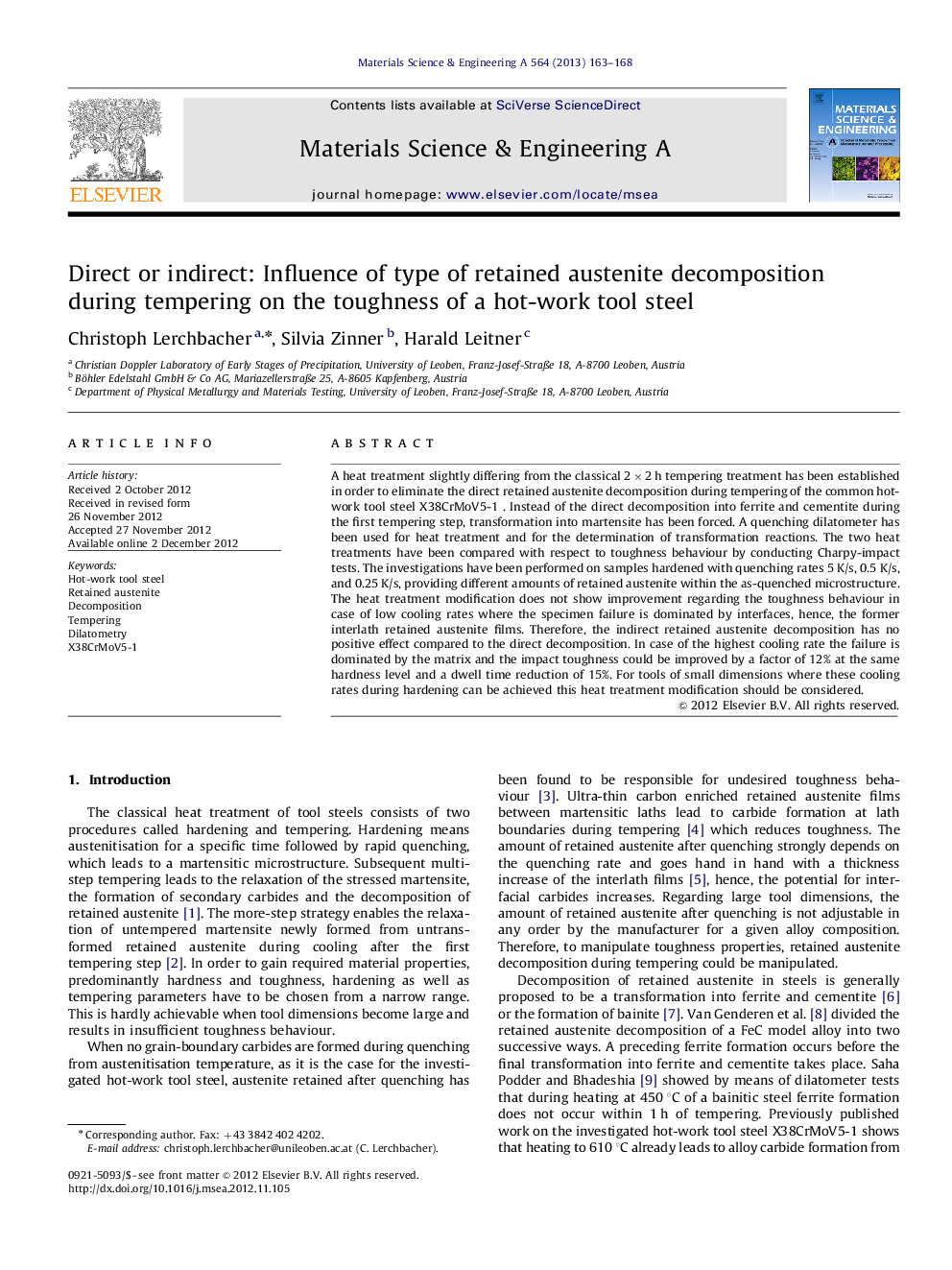| Article ID | Journal | Published Year | Pages | File Type |
|---|---|---|---|---|
| 7983274 | Materials Science and Engineering: A | 2013 | 6 Pages |
Abstract
A heat treatment slightly differing from the classical 2Ã2Â h tempering treatment has been established in order to eliminate the direct retained austenite decomposition during tempering of the common hot-work tool steel X38CrMoV5-1. Instead of the direct decomposition into ferrite and cementite during the first tempering step, transformation into martensite has been forced. A quenching dilatometer has been used for heat treatment and for the determination of transformation reactions. The two heat treatments have been compared with respect to toughness behaviour by conducting Charpy-impact tests. The investigations have been performed on samples hardened with quenching rates 5Â K/s, 0.5Â K/s, and 0.25Â K/s, providing different amounts of retained austenite within the as-quenched microstructure. The heat treatment modification does not show improvement regarding the toughness behaviour in case of low cooling rates where the specimen failure is dominated by interfaces, hence, the former interlath retained austenite films. Therefore, the indirect retained austenite decomposition has no positive effect compared to the direct decomposition. In case of the highest cooling rate the failure is dominated by the matrix and the impact toughness could be improved by a factor of 12% at the same hardness level and a dwell time reduction of 15%. For tools of small dimensions where these cooling rates during hardening can be achieved this heat treatment modification should be considered.
Related Topics
Physical Sciences and Engineering
Materials Science
Materials Science (General)
Authors
Christoph Lerchbacher, Silvia Zinner, Harald Leitner,
